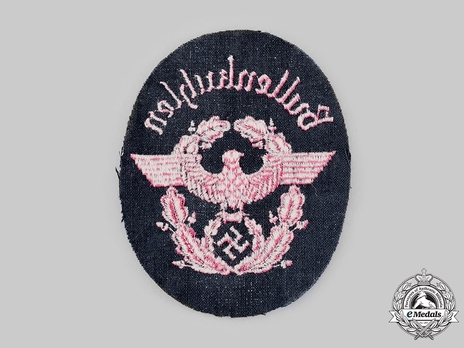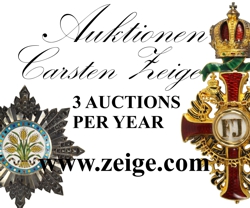Firefighters Enlisted Ranks Blue Uniform Professionals Sleeve Eagle
SKU: 74.GOR.03.02.03.003
Estimated market value:


Estimated market value:
Attributes
History
Before the NSDAP’s rise to power in 1933, firefighters and their regulations were overseen by the individual German states. Fire services were more or less run by the communities as they saw fit. Larger towns and cities featured professional fire services (Berufsfeuerwehr), while rural areas featured volunteer fire services (Freiwillige Feuerwehr).
Under Third Reich rule, fire services were to be unified on a national level and therefore placed under the control of the German Police. National socialist doctrine was infused and the fire services militarised in preparation for war and the anticipated bombing of German cities.
Between 1933 and 1938, the professional fire service was referred to as “Feuerlöschpolizei” (fire extinguishing police), while between 1938 and 1945, they were referred to as “Feuerschutzpolizei” (fire protection police) as a subdivision of the German Police.
Volunteer firefighters were classified as part of the Hilfspolizei (police auxiliary forces).
Firefighter uniforms had generally been made of dark blue material, predominantly in Prussia. This colour was still used during the 1930s, but then changed in 1939 when members of the professional fire service received a green uniform similar to that of the German Police. The uniform garments featured carmine piping and initially black, later dark brown (as of September 1942) collars, cuffs, and cap bands as identifiers. However, volunteer firefighters kept wearing dark blue uniforms with carmine piping until the end of the war.
A Werkfeuerwehr was an industrial fire brigade. Every large company protected its factories by employing their own private fire brigade. Members of these fire brigades wore uniforms very similar to regular firefighter uniforms, albeit with a few key differences concerning their insignia.
Firefighter sleeve eagle insignia were introduced on July 25, 1936. They were worn on the upper left arm. The design is the same as those for the various German Police subgroups. The identifier for firefighters was the carmine branch colour. Uniquely, not just the wreath and eagle, but the swastika is in carmine as well. All other Police subgroups feature a black swastika with their sleeve eagles. However, this changed with the introduction of the green uniform for firefighters.
The cloth backing of the insignia is in dark blue or Police-green, depending on the uniform colour of the wearer.
The insignia features a wreath and an eagle emblem. Additionally, the wearer’s town or city name was added for professional fire service members. Sleeve eagles of volunteer firefighters did not feature a location name.
Sleeve eagles for higher ranks were silver-coloured. These include the ranks of Haupttruppführer and above. No location name was used on the sleeve eagle insignia of these ranks.
Location names were to be discontinued as of December 1941, but photographic evidence shows it took much longer before this order was fully embraced.
A specific Werkfeuerwehr sleeve eagle insignia was introduced in August of 1942. It is in the same design as the one for regular firefighters, but with the word “Werkfeuerwehr” (or “Werksfeuerwehr”) instead of the location of deployment.


Comments
Sign in to comment and reply.


Scroll Top